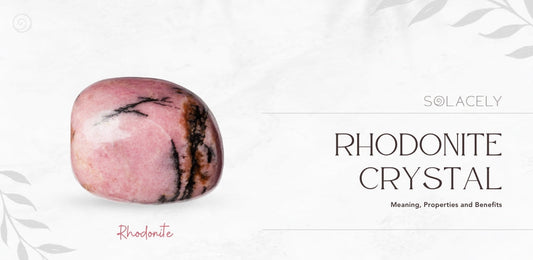Understanding the Chakra System
The chakra system is an ancient framework from Eastern spiritual traditions representing the complex interplay between the physical body, consciousness, and spiritual health. The term 'chakra' is derived from the Sanskrit word 'wheel' or 'disk' and refers to the energy centers throughout the body.
What Are Chakras?
Chakras are envisioned as spinning wheels of energy, each corresponding to different aspects of our physical, emotional, and spiritual well-being. They are not physical entities but rather areas where the flow of subtle energy is powerful and influential. Typically, seven main chakras align along the spine, starting from the base and moving up to the crown of the head. Each chakra is associated with specific organs, nerves, and psychological components. For a more in-depth understanding, one can explore the chakras explained, which provides a comprehensive overview of the chakra system.
The Role of the Sacral Chakra
The sacral chakra, or Svadhisthana in Sanskrit, is the second chakra in the lower abdomen, just below the navel. This chakra centers on emotion, pleasure, sensuality, intimacy, and connection. The energy of the sacral chakra is characterized by flexibility and flow, and it plays a vital role in the health of our emotional body.
The sacral chakra's health is vital to enjoy life, feel pleasure, and create. It governs our ability to relate to others in an open and friendly manner and to flow with the changes and challenges of life. An imbalance in the sacral chakra can manifest as emotional instability, fear of change, sexual dysfunction, or addiction.
For those seeking to address issues related to the sacral chakra, balancing the sacral chakra might involve various practices, including the use of 'sacral chakra mudras.' Additionally, incorporating sacral chakra essential oils and exploring aspects like sacral chakra qualities can further enhance one's understanding and connection to this energy center. Understanding the role and characteristics of the sacral chakra is essential for anyone looking to achieve a balanced and harmonious chakra system.
Mudras and Chakra Balancing
What Are Mudras?
Mudras, often called "seals" or "gestures," are symbolic hand positions used in yoga and meditation to direct the flow of energy within the body and stimulate different areas of the brain. They are a non-verbal mode of communication and self-expression, consisting of hand gestures and finger postures that have the power to produce joy and happiness, My Yoga Teacher explains. Mudras invoke divine power in the mind and body of the practitioner, allowing them to connect with the universal energy.
Each finger of the hand represents a different element, creating connections to these elements when touched together in specific ways:
| Finger | Element |
| Thumb | Fire |
| Index Finger | Air |
| Middle Finger | Space/Ether |
| Ring Finger | Earth |
| Pinky Finger | Water |
Connecting Mudras and Chakras
Mudras are intricately linked with the chakra system, the network of energy centers within the body. Each Mudra helps activate and balance the energy of specific chakras, facilitating the free flow of energy throughout the body. For instance, the Varuna Mudra is associated with the sacral chakra, which is the center of creativity and pleasure, and performing this gesture can help to unlock and balance the sacral energies.
As part of a yoga or meditation routine, the practice of mudras can improve mood, enhance concentration, and contribute to a deeper spiritual connection, thus fostering the chakra's health. Chakra Practice highlights the significance of mudras in stimulating energy flow and releasing blockages in the chakras.
Understanding the connection between mudras and the chakra system can benefit practitioners seeking balance and harmony within their bodies. Each chakra has corresponding mudras that can enhance their function and assist in healing. For example, alongside the Varuna mentioned above Mudra for the sacral chakra, the Ganesha Mudra can activate the solar plexus chakra, and the Anjali Mudra can engage the heart chakra.
By incorporating these simple yet profound hand gestures into your practice, you can amplify the effectiveness of your chakra-balancing efforts. Whether you are a beginner or seasoned in spiritual practices, mudras are a powerful tool for enhancing your well-being and promoting positive energy flow through your chakra system. Regular training is essential for experiencing the full benefits that mudras can offer, and they can be practiced with specific intentions or as part of a holistic approach to wellbeing.
Check out our 7 chakra healing bracelet
Sacral Chakra Mudras
Mudras, or hand gestures, are integral in balancing the chakras. The sacral chakra, known for its association with creativity, sensuality, and emotions, can be harmonized through specific mudras. Here are some significant mudras that target the sacral chakra:
The Varuna Mudra
The Varuna Mudra is associated with the water element and is believed to help regulate bodily fluids and emotional states. To perform this Mudra, one touches the tips of the thumb and little finger together while extending the other fingers. Practitioners use this Mudra to enhance the energy of the sacral chakra and balance the water element within. This can be particularly helpful for those experiencing emotional fluidity or creativity issues.
The Linga Mudra
The Linga Mudra activates the fire element and is known to stimulate the sacral chakra. It is formed by interlocking the fingers of both hands, with the left thumb pointing upwards, encircled by the right thumb. This Mudra is said to ignite the inner fire that governs passion and transformation (Source).
The Gyan Mudra
A widely recognized mudra, the Gyan Mudra, enhances the sacral chakra's creativity, intuition, and emotional equilibrium attributes. It involves connecting the tip of the thumb with the tip of the index finger to form a circle, with the rest of the fingers extended. This gesture is believed to encourage knowledge and wisdom.
The Varada Mudra
The Varada Mudra, known as the "gesture of compassion," is another hand gesture that supports energy flow in the sacral chakra. This open-palmed gesture is associated with offering and generosity and can be used to cultivate these qualities within oneself (Chakra Practice).
The Prithvi Mudra
Also known as the Earth Mudra, the Prithvi Mudra is implemented to instill a sense of grounding and stability, which can be essential for sacral chakra balancing. This Mudra is believed to strengthen the connection to the earth and provide a solid foundation for the creative energies governed by the sacral chakra (Chakra Practice).
The Sacral Chakra Mudra
Specifically designed to balance the sacral chakra, the Sacral Chakra Mudra involves joining the index finger to the thumb with the other fingers outstretched. This gesture is intended to directly stimulate the sacral area and promote the flow of its energies (Chakra Practice).
The Ganesha Mudra
Named after the elephant-headed deity Ganesha, who is revered for his power to remove obstacles, the Ganesha Mudra is practiced to invoke the qualities of grounding, strength, and removal of barriers. It is particularly relevant for the sacral chakra as it encourages the release of creative blockages and the flow of abundance (Chakra Practice).
Integrating these mudras into daily practice can support the alignment and vitality of the sacral chakra. For more comprehensive information on each chakra, their meanings, and ways to balance them, readers can explore the chakras explained and delve into the sacral chakra meaning. Additionally, balancing the sacral chakra can provide further insights into enhancing personal wellbeing and creativity.
Practice and Benefits
The intricate connection between our physical and spiritual wellbeing is often navigated through the chakra system—a fundamental aspect of various esoteric traditions. The sacral chakra is pivotal in our emotional and creative energies within this system. Mudras and symbolic hand gestures influence these chakras' flow and balance of power.
How to Practice Mudras
Mudras for the sacral chakra is practiced by assuming specific hand positions that are believed to have the power to activate and balance the energy within this chakra. Here are general steps for practicing mudras:
- Find a quiet place where you can sit comfortably without distractions.
- Begin with a few deep breaths to center your focus and calm your mind.
- Hold the chosen Mudra gently with both hands, ensuring your hands are relaxed.
- Maintain each Mudra for several minutes while focusing on your breathing or the specific intention related to the sacral chakra.
- Regularly incorporate these mudras into your meditation or yoga practice for maximum benefit.
Details of specific sacral chakra mudras, such as the Varuna and Linga mudras, can be found on Chakra Practice, where the hand positions and movements are described to guide practitioners in stimulating and balancing the sacral chakra's energy.
Benefits for the Sacral Chakra
Practicing sacral chakra mudras offers numerous advantages related to the chakra’s attributes, which include creativity, sensuality, and emotional stability. Here are some benefits associated with regular mudra practice:
- Stimulates Creativity: Mudras can help unleash the creative energies within the sacral chakra, fostering artistic expression and innovative thinking.
- Enhances Emotional Wellbeing: By balancing the sacral chakra, mudras contribute to emotional regulation and the ability to experience pleasure.
- Promotes Sensuality: The sacral chakra is the center of sensuality and intimacy, and mudras can help enhance these aspects of life.
- Encourages Joy and Vitality: A balanced sacral chakra indicates a joyous and vibrant life. Mudras can contribute to this sense of vitality and enjoyment.
The practice of sacral chakra mudras should be approached with patience and consistency. As with any chakra balancing technique, the cumulative effects become more pronounced over time. To further explore the chakra system and its intricate workings, consider delving into the chakras explained and balancing the sacral chakra for a comprehensive understanding and practical guidance.
Mudras in Daily Life
Incorporating mudras into one's daily routine can be transformative, offering benefits that extend beyond the physical to the emotional and spiritual realms. These hand gestures, deeply rooted in ancient wisdom, can be seamlessly integrated into various aspects of life, from meditation sessions to moments of introspection.
Integrating Mudras into Routine
For those seeking to harness the power of mudras, consistency is critical. These gestures can be practiced virtually anywhere, making them an accessible tool for chakra balancing and personal growth. One can begin by introducing mudras into their meditation practice or using them during quiet moments, such as while reading or during a work break.
Furthermore, aligning mudra practice with specific intentions, such as balancing the sacral chakra or enhancing focus, can amplify their effectiveness. Incorporating mudras into a holistic wellness routine that includes yoga, aromatherapy, and meditation techniques is also beneficial, creating a synergistic approach to wellbeing.
Mudras for Beginners
For newcomers to the practice, understanding the elemental association of each finger can provide deeper insight into the purpose and potential of different mudras (My Yoga Teacher). Beginning with simpler mudras like the Gyan Mudra can lay a solid foundation for exploring more complex gestures.
A beginner's approach to mudras may look like this:
Start with a specific mudra, such as the Varuna Mudra for the sacral chakra, and hold it for a few minutes each day.
- Gradually increase the duration of practice as comfort and familiarity grow.
- Combine mudras with breathing exercises or mantras to enhance concentration and impact.
- Maintain an open and experimental attitude, adjusting practices based on personal experiences and goals.
Regularly engaging in mudra practice and integrating these gestures into daily life, individuals can experience improved mood, clarity of mind, and a more profound connection with their chakra system. As with any new practice, patience and persistence are vital for experiencing the full benefits of mudras.
Beyond Mudras
While mudras are powerful tools for engaging and balancing the chakras, particularly the sacral chakra, they are not the only available methods. For those looking to harmonize their sacral chakra further, several complementary practices and techniques exist to explore.
Other Ways to Balance the Sacral Chakra
The sacral chakra, centered around emotions, sensuality, creativity, and pleasure, can be balanced through various holistic approaches. It is situated in the lower abdomen, below the navel, and is pivotal in one's emotional and creative expression.
- Yoga: Engaging in specific yoga poses that target the sacral chakra can help release energy blockages and promote positive energy flow. Hip-opening poses are particularly beneficial for the sacral chakra.
- Meditation: Focusing on the sacral chakra during meditation can heighten awareness of this energy center and foster a sense of balance. Root chakra meditation techniques can provide a strong foundation for sacral chakra work.
- Aromatherapy & Essential Oils: Essential oils associated with the sacral chakra can be used in aromatherapy to help balance this energy center. Scents like orange and sandalwood can be soothing and stimulating for the sacral chakra.
- Crystal Therapy: Incorporating healing stones and crystals such as carnelian and orange calcite can support the sacral chakra. Heart chakra healing stones often resonate with the sacral area as well.
- Nutrition: Consuming foods and herbs that correspond to the sacral chakra's energy, such as orange-colored fruits and nuts, can positively affect this chakra's balance.
- Affirmations: Speaking or writing affirmations focusing on creativity, pleasure, and emotional well-being can reinforce positive sacral chakra qualities (Sacral Chakra Qualities).
Complementary Practices for Mudras
Mudras can be integrated into a broader practice for chakra balancing. They are not exclusive and can be combined with other techniques to enhance overall wellbeing.
- Chanting and Mantras: Pairing mudras with throat chakra mantras or chanting specific sounds associated with the sacral chakra can amplify the effects of both practices.
- Breathing Exercises: Incorporating controlled breathing techniques while performing mudras can help direct energy to the sacral chakra and deepen the practice.
- Movement and Dance: As the sacral chakra is closely linked to fluidity and movement, engaging in dance or free-form movement can help unblock and stimulate this energy center.
- Color Therapy: Surrounding oneself with the color orange, which corresponds to the sacral chakra, can assist in its activation and balancing.
- Journaling: Reflecting on sacral chakra themes such as pleasure, creativity, and emotions through journaling can complement the physical practice of mudras.
Individuals can create a multifaceted approach to sacral chakra balancing by combining mudras with these additional practices. Regular engagement with these techniques can enhance creativity, emotional stability, and a deeper connection to one's sensual self. As with any practice, consistency is essential, and integrating these methods into a daily routine can lead to profound and lasting effects on one's energy and overall wellbeing. For a comprehensive look at chakra balancing, including the sacral chakra, explore our detailed guide on chakra balancing techniques.





















